It seems there might be a slight misunderstanding regarding the term "wire resistor," as resistors and wires are two different components in electronics. Let's clarify both terms:
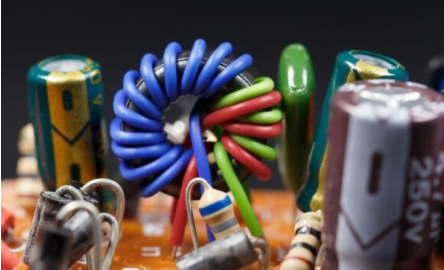
Resistor:
- Definition: A resistor is a passive two-terminal electrical component that resists the flow of electric current in a circuit. It is designed to have a specific amount of resistance to limit or control the flow of current in a particular part of the circuit.
- Types: Resistors come in various types, including carbon film, metal film, wirewound, and more, each with specific characteristics and applications.
- Usage: Resistors are used for current limiting, voltage division, signal conditioning, impedance matching, and various other purposes in electronic circuits.
Wire:
- Definition: A wire is a long, slender, flexible metal conductive path used for carrying electrical current between different components in a circuit.
- Types: Wires can be made of various materials like copper, aluminum, or other conductive materials, and they come in different gauges or thicknesses.
- Usage: Wires are essential for connecting components in a circuit, carrying current, and enabling the transfer of electrical signals between different parts of an electronic system.
Wirewound Resistor:
- Definition: A wirewound resistor is a type of resistor where a resistive wire is wound around an insulating core to create a precise resistance value.
- Characteristics: Wirewound resistors are known for their high precision, stability, and ability to handle high power levels.
- Applications: These resistors are commonly used in applications where high precision and power-handling capabilities are required, such as in power supplies, amplifiers, and industrial equipment.
In summary, while "wire resistor" is not a standard term, a wirewound resistor uses a resistive wire as a key component in its construction. Wires themselves act as conductive paths for electrical current transmission in a circuit. It's crucial to understand the unique functions and applications of both wires and resistors to design and assemble efficient and safe electronic circuits.
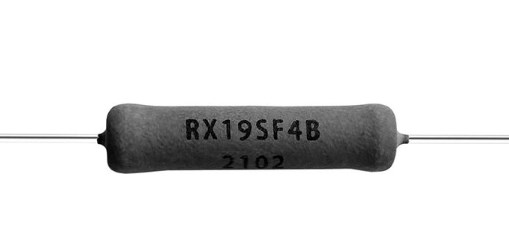
What Material is Used in Wire Resistors:
Wirewound resistors, which consist of a resistive wire wound around an insulating core, are constructed using specific materials to ensure precise resistance values, stability, and durability. The materials used in wirewound resistors typically include:
-
Resistive Wire: The resistive wire is the primary material in wirewound resistors. It has a high resistivity to limit the flow of current through the resistor. Common materials used for the resistive wire in wirewound resistors include:
- Nickel-Chromium (Nichrome): Nichrome wire is a popular choice for its high resistivity and stability over a wide temperature range.
- Constantan: Constantan is another alloy commonly used for its consistent resistance properties.
- Kanthal: Kanthal is an iron-chromium-aluminum alloy known for its high-temperature resistance and stability.
-
Core Material: The core material provides structural support and insulation for the resistive wire. It helps maintain the shape and integrity of the resistor. Common core materials used in wirewound resistors include:
- Ceramic: Ceramic is a popular core material due to its excellent insulating properties, high-temperature tolerance, and mechanical strength.
- Fiberglass: Fiberglass cores are also used for their insulating properties and mechanical stability.
-
End Caps: In some wirewound resistors, metallic end caps are used to terminate the resistive wire and provide electrical connections. These end caps are typically made of materials with good conductivity and mechanical strength, such as brass or other metal alloys.
-
Coating: Some wirewound resistors are coated with a protective layer to enhance their durability and insulation properties. The coating material is chosen to provide protection against environmental factors, moisture, and mechanical stresses.
By carefully selecting and combining these materials, manufacturers can produce wirewound resistors with the desired resistance values, temperature coefficients, power ratings, and stability characteristics for various applications in electronics, industrial equipment, power supplies, and other systems that require precision resistive elements.
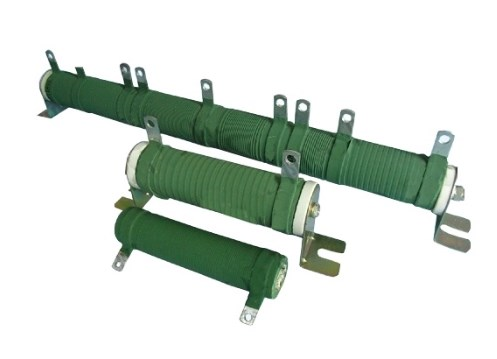
Types of Wire Wound Resistor:
Wirewound resistors are a type of passive electronic component that provides resistance to the flow of electrical current in a circuit. These resistors are constructed by winding a resistive wire around an insulating core. There are several types of wirewound resistors available, each designed for specific applications based on their construction, materials, and properties. Here are some common types of wirewound resistors:
Types of Wirewound Resistors:
-
Precision Wirewound Resistors:
- These resistors offer high precision in resistance values and tolerance levels.
- They provide excellent stability over a wide temperature range and are used in applications that require precise and accurate resistance values.
-
Power Wirewound Resistors:
- Power wirewound resistors are designed to handle high power ratings, typically ranging from several watts to kilowatts.
- They are capable of dissipating large amounts of power without overheating, making them suitable for power supplies, motor control, and high-power applications.
-
Potentiometer Wirewound Resistors:
- Potentiometer wirewound resistors are variable resistors that allow users to adjust the resistance along the wire-wound element.
- They are commonly used in applications where variable resistance is required, such as volume controls in audio equipment and tuning circuits in radios.
-
Fusible Wirewound Resistors:
- Fusible wirewound resistors are designed to act as fuses in a circuit by opening or breaking the connection when excess current flows through them.
- They provide both resistance and fuse protection in a single component, offering overcurrent protection in sensitive circuits.
-
High-Frequency Wirewound Resistors:
- High-frequency wirewound resistors are optimized for use in applications that operate at high frequencies, such as RF (radio frequency) circuits.
- They are capable of maintaining stable performance and low parasitic effects at high frequencies, making them suitable for communication and signal processing applications.
-
Non-Inductive Wirewound Resistors:
- Non-inductive wirewound resistors are designed to minimize inductance in the resistor element, reducing the effects of electromagnetic interference and signal distortion.
- They are commonly used in applications where inductance can impact circuit performance, such as high-frequency amplifiers and precision measurement equipment.
These are just a few examples of the types of wirewound resistors available in the market. Each type of wirewound resistor is designed to meet specific requirements related to precision, power handling, variable resistance, fusible protection, frequency characteristics, or inductance considerations. When selecting a wirewound resistor for a particular application, it is essential to choose the type that best matches the specifications and performance demands of the circuit or system.
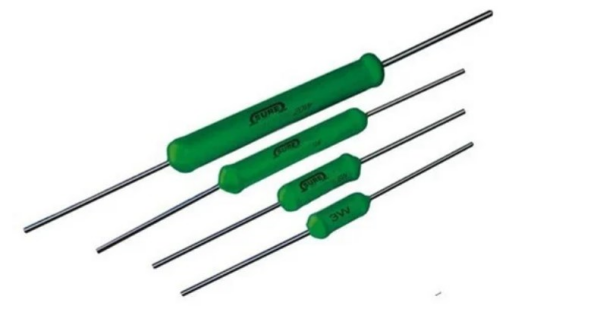
Advantage of a Wire Wound Resistor
Wirewound resistors offer several advantages that make them suitable for various applications in electronics and electrical engineering. Some of the key advantages of wirewound resistors include:
-
High Precision and Stability:
- Wirewound resistors provide high precision in resistance values and excellent stability over a wide range of temperatures.
- These resistors offer accurate and consistent resistance values, making them ideal for applications that require precise and reliable performance.
-
High Power Handling Capacity:
- Wirewound resistors are capable of handling high power levels, ranging from watts to kilowatts, without overheating.
- They are suitable for power electronics applications that require resistors to dissipate large amounts of power effectively.
-
Low Noise and Low Inductance:
- Wirewound resistors exhibit low noise and low inductance characteristics, making them ideal for applications where signal integrity and minimal electromagnetic interference are essential.
- They help minimize unwanted effects on signals in sensitive circuits, such as audio equipment and communication systems.
-
Excellent Temperature Coefficient:
- Wirewound resistors offer a relatively low temperature coefficient of resistance (TCR), meaning that the resistance value changes minimally with temperature variations.
- This feature ensures stable performance across a wide temperature range, making wirewound resistors suitable for temperature-sensitive applications.
-
Durability and Longevity:
- Wirewound resistors are known for their durability and long operational life.
- The robust construction of wirewound resistors allows them to withstand mechanical stress, environmental factors, and high operating temperatures, ensuring reliable performance over an extended period.
-
Wide Range of Resistance Values and Power Ratings:
- Wirewound resistors are available in a broad range of resistance values and power ratings to meet diverse application requirements.
- This versatility makes wirewound resistors suitable for a wide range of electronic circuits and systems, from precision instruments to high-power industrial equipment.
-
Fusible Protection (in fusible wirewound resistors):
- Fusible wirewound resistors provide overcurrent protection by acting as fuses when excess current flows through them.
- This feature helps protect sensitive components and circuits from damage due to overcurrent conditions.
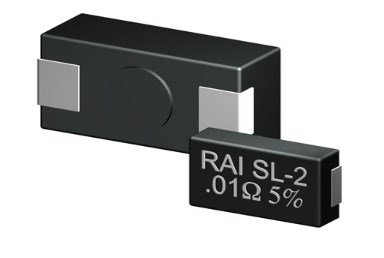
Overall, the precision, power handling capacity, stability, low noise, durability, and versatility of wirewound resistors contribute to their widespread use in various electronic applications that demand accuracy, reliability, and high-performance characteristics.



